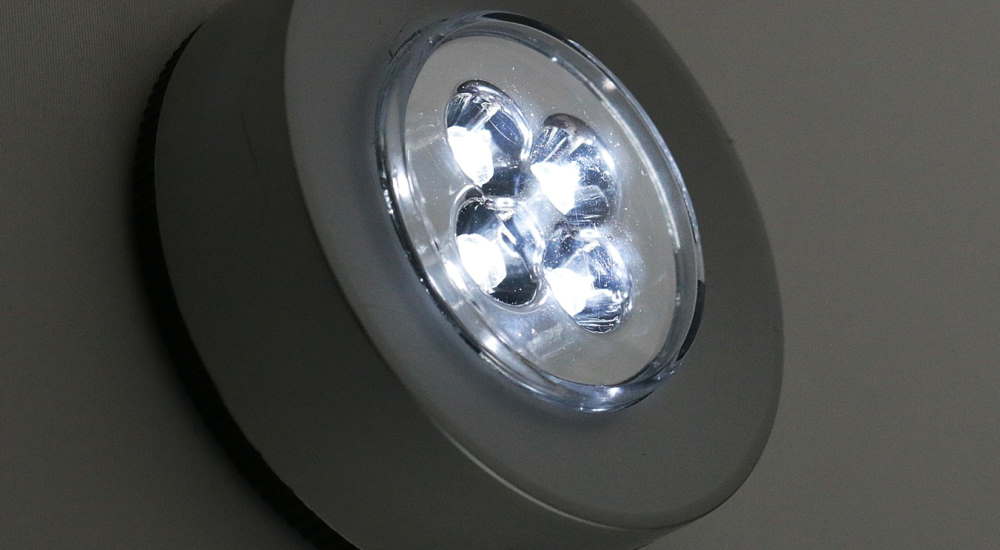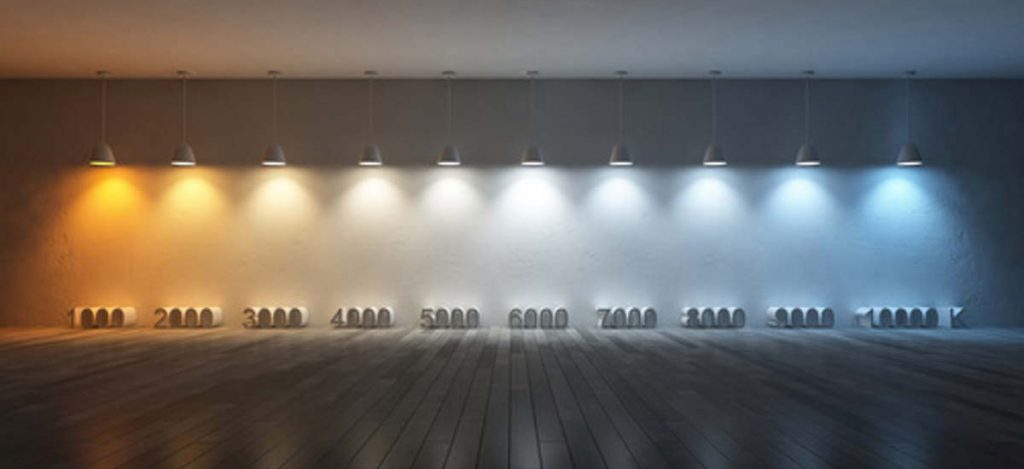Lighting is intended to provide functional and aesthetic effects. A common way to illuminate an indoor space is to add windows or skylights to let the sunlight in. Light fixtures and lamps are used as artificial light sources.
Task lighting is a concentrated form of lighting used for functional purposes, such as for reading, cooking, or working. It can be localized to a single spot in the room.
You need up to 1200 lux of task lighting for regular reading. Therefore, accent lighting is primarily for decorative purposes, such as landscaping and highlighting certain interior elements. General or ambient lighting is used for general illumination of an indoor or outdoor area. General lighting can be as low as 20 lux, which is adequate to help you spot obstructions when navigating your way inside a room or garage. You need bulbs to illuminate an outdoor or indoor space.
LEDs save energy by being more energy-efficient than traditional light bulbs. LEDs use up to 90% less energy than incandescent bulbs and up to 50% less energy than fluorescent bulbs. This means that they require fewer watts of energy to produce the same amount of light. Moreover, LEDs also last longer than traditional bulbs, which means less energy is needed to replace them, and they produce less heat, which reduces the energy required for cooling.
Common bulb types and LED technology
Here are common types of bulbs that you can find in stores:
- Incandescent: Invented by Thomas Edison, it’s the original form of the electric bulb. Inside the glass bulb, there’s a tungsten filament and rare gas, like argon or neon. The filament will glow brightly when an electrical current passes through it. Today, incandescent light bulbs are typically used for accent lighting due to their favorable hues. It is now rare to find incandescent light bulbs with more than 30W of power input, due to inefficiency concerns.
- Fluorescent: Fluorescent bulbs usually have long, tubular shapes filled with mercury vapor. Electrical charge ionizes mercury vapor and is known for its good lifespan, which is usually more than several years. These bulbs are more expensive than incandescent bulbs, but still preferable due to their longer lifespan. They are more efficient, but emit harsh, white light, which may cause eye fatigue more easily. Due to the use of toxic vapor, these bulbs can be potentially toxic when broken.
- Compact fluorescent: Also known as CFL bulbs, they also use ionized mercury vapor. CFL bulbs are more suitable for household uses with small twisted shapes. They also share other characteristics of regular fluorescent bulbs.
- LED: LED or Light-Emitting Diode is the most efficient and has the longest lifespan compared to other bulb technologies. Whether it’s filament or gas, there’s no heated component that emits light. Instead, it uses a special type of diode that produces light, which is much more efficient. Because a diode is essentially a semiconductor, LED lamps can be digitally controlled as smart lamps.
How does LED work?
LED is a type of diode or semiconductor that emits light when an electrical current passes through it. Light, both visible and invisible, is made of the emitted photons. It’s essentially a form of energy that works like a particle that can be reflected by many materials. Early LEDs were low-intensity models, usually used in calculators and indicator displays as seven-segment components.
Compared to incandescent and fluorescent light sources, LEDs have more advantages, such as a long lifetime, lower power consumption, smaller size, faster switching, and better physical robustness. LED lamps are more complex with support components, while incandescent bulbs are much simpler and you can connect them directly to unregulated AC or DC power sources.

LED light saves the energy
LED bulbs are more suitable for outdoor uses because they can withstand low temperatures during winter. It’s also the reason why LED lamps are popular choices for refrigerated display cases, cold storage spaces, meat lockers, and freezers. LED lights also have better dimming characteristics, because electric currents can be adjusted to increase or decrease the light intensity. Many newer LED lamps have built-in electronic circuits and Wi-Fi support that allow integration with a smart home network. Long-lasting smart LED lamps can last for 10 years, which adds convenience and functionality to your home. Because LEDs can be made very compact, they suit your design preferences better. Some LED lamps are designed to appear like incandescent bulbs for aesthetic purposes.
LEDs work by passing a current through a semiconductor material. When the current passes through the semiconductor, electrons become excited and release energy in the form of light. The color of the light depends on the type of semiconductor material used. LEDs are much more efficient than traditional incandescent bulbs because they do not require a filament to produce light, and they can convert almost all of the energy they use into light.
Few WWords About LEDs basics
LEDs produce light due to a natural phenomenon, known as electroluminescence. In semiconductors, electrons move more easily between energy bands. When an electric current is applied to the LED, its P-N junction emits light. Electrons travel from the N-region to the P-region of LED, when current flows through it. Energy will be emitted as light and heat when electrons are recombined in the P-region. Gallium phosphide (GaP) and gallium arsenide phosphide (GaAsP) semiconductors emit photons or lights when electrons dissipate energy. Advances in materials technology make it possible to produce photons at different wavelengths to get light with different colors.
It is immediately clear that there’s no filament or gas that heats up and glows in LED lamps. Meaning that LED lamps operate at much lower temperatures and this has an impact on their life expectancy. It is easier to focus or disperse light in LED bulbs, so they can be used as a task or ambient lighting, depending on the purpose. LED bulbs that produce 800 lumens consume less than 10W of power. In comparison, incandescent bulbs need 60W, halogen bulbs 40W and CFL bulbs 15W to produce 800 lumens as well. Philips ultra-efficient LED bulbs may last up to 45,000 hours of continuous use, while incandescent bulbs last for 1,000 hours and CFL for 10,000 hours on average.
LED color temperatures
Homeowners choose the color temperature they prefer. It all depends on what mood the fixtures need to evoke, and what purpose the fixtures are intended for. Therefore, don’t just pick one color temperature for an entire home.

Warm fixtures can be installed in one room, and cool fixtures in another. For example:
2700K – best for Living/Family rooms & Commercial/Hospitality
3000K – best for Living/Family rooms & Commercial/Hospitality
3500K – best for Kitchen/Bathroom & Commercial
4100K – best for Garage & Commercial
5000K – best for Commercial/Industrial/Institutional
6500K – best for Commercial/Industrial/Institutional
As you know already, there are some obvious applications of color temperature. These differences can be derived from biology. Incandescent lights or warm LED lights encourage the release of melatonin, while fluorescent or cooler LED lights encourage the release of serotonin.
If you’re looking for home-office lighting read about a topic we’ve written about before.
The LED color scheme is based on the semiconductor material used. LEDs are formed from a material that has a positive and negative layer. When electricity is applied to the LED, it causes electrons to move from the negative layer to the positive layer. As the electrons move, they release energy in the form of light. The color of the light is determined by the type of semiconductor material used. Moreover, LED color based on a power input is also possible. The current flowing through the LED can determine the color output, with higher currents producing more intense colors. The color temperature of the LED is also adjustable, allowing for white light to be produced at specific color temperatures.
Despite their many benefits, it is important to obtain LED bulbs from reputable manufacturers. Based on the DC power component of the lamp structure, LED lamps may cause micro flickers and contribute to increased eye strain. You also need to choose the right LED lamps from different parts of your home. Avoid using LED lights with higher color temperatures at more than 5,000 K, for your bedroom because they emit bluish-white light. They may disrupt your circadian rhythm, resulting in intermittent sleep or sleeplessness.
Final thoughts
LED bulbs are not only more efficient, cooler, and more durable. There are other reasons why you should consider replacing existing incandescent, halogen, and CFL bulbs in your home with LED. Due to their longer lifespan, LED bulbs have fewer environmental impacts. Incandescent bulbs have a much higher carbon footprint due to significantly higher power consumption. Because incandescent lamps don’t last as long, you need to replace them more often. Material extractions and manufacturing processes of incandescent and CFL bulbs put more pressure on our environment. Any responsible consumer should choose products with a longer lifespan to contribute to preserving the environment.
